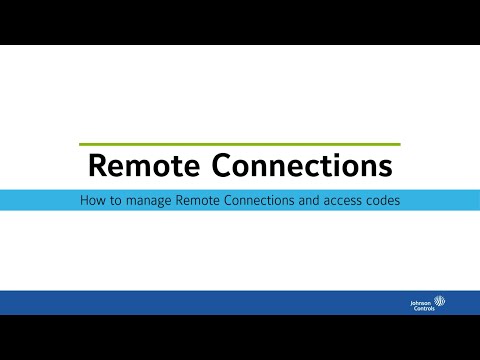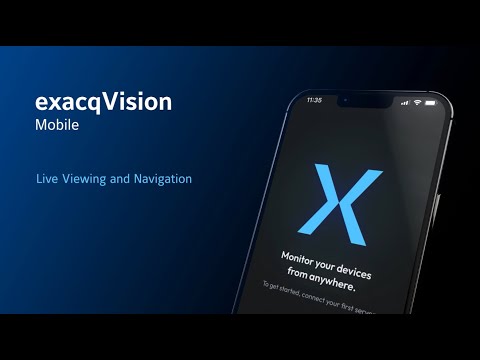Overview The Axis M5000-G PTZ camera is a multi-sensor camera containing three stationary wide-angle lenses around the circumference of the camera body and one center-mounted PTZ lens. This guide is intended to help users automate the positioning of the PTZ lens upon events, such as motion detection. Requirements NOTE: While this article is written specifically… Continue reading Motion Event PTZ Presets with the Axis M5000-G in exacqVision
Tag: Guest
Adjustments for Loud Fan Complaints
Description Some users with newer exacqVision server hardware have complained of their systems having louder than expected system fans. <br> Product <br> Steps to Reproduce No specific steps are needed to reproduce since this was a factory setting. A-Series 2A & Q-Series Models A-Series FA & FAR Models <br> Solution A-Series 2A & Q-Series Models… Continue reading Adjustments for Loud Fan Complaints
Axis P3353 Cameras Not Recording on a Cloudvue Gateway
Title Axis P3353 Cameras Not Recording on a Cloudvue Gateway Description It has been observed that while live images are visible the Axis P3353 is not recording. Product Steps to Reproduce Expected Results Actual Results Solution
Archiving
Archiving allows you to create a copy of selected data on another storage device, whether it be an exacqVision S-series storage server, a user provided storage server, exacqVision Cloud Drive, an Amazon S3 account, or Wasabi S3 account. This video explains how to create a new archiving profile, establish the archiving task, then schedule the… Continue reading Archiving
Axis Q19 Series Thermal Cameras Integration Guide
Description Axis thermal cameras provide heat-based detection for monitoring property or detecting thermal anomalies which could lead to incidents involving smoke or fire. This guide is intended to introduce the use of these devices with your exacqVision VMS software. Requirements At the time of writing this article, these instructions pertain to the Axis Q19 Series… Continue reading Axis Q19 Series Thermal Cameras Integration Guide
exacqVision Mobile – Getting Started & Server Connections
This video shows users how to connect to exacqVision Servers and manage Server connections.<br><br> Chapters:<br>00:00 Intro<br>00:25 Connecting to your first server<br>00:39 Connecting with an access code<br>01:12 Connecting using a URL<br>01:34 Quick View<br>02:05 Connecting to additional servers<br>02:22 Managing server connections<br> <br>
exacqVision – Remote Connections
exacqVision 24.09 introduces the Remote Connections feature. This video for system administrators discusses the benefits of using Remote Connections as well as creating access codes for mobile users. This feature can be used with exacqVision Mobile 24.09 and above.<br><br> Chapters:<br>00:00 Intro<br>00:33 Features of Remote Connections<br>00:48 Network architecture<br>01:54 Enable Remote Connectivity in the Client<br>02:17 Mobile Optimized… Continue reading exacqVision – Remote Connections
exacqVision Mobile – Search, Bookmarks, Export
Learn more about using the exacqVision Mobile app to search for, bookmark, and export recorded events.<br><br> Chapters:<br>00:00 Intro<br>00:09 Searching For Recorded Events<br>02:52 Creating Bookmarks and Cases<br>05:31 Retrieving Bookmarks and Cases<br>06:45 Exporting Recordings<br> <br>
exacqVision Mobile – Live Viewing and Navigation
This video takes a deep dive into general navigation, live viewing, and creating saved views in the all new exacqVision Mobile app.<br><br> Chapters:<br>00:00 Intro<br>00:10 Live<br>00:33 Quick View<br>00:41 Editing Quick View<br>01:17 Audio<br>01:52 Creating and Editing Saved Views<br>03:34 Navigating Between Views<br>03:47 Focus View<br>05:11 Devices Screen<br> <br>
exacqVision Mobile – PTZ, Dewarp, and Security Integrations
Follow along with this video on using the exacqVision Mobile app to control PTZ cameras, dewarp fisheye cameras, and interact with the access control or intrusion detection systems integrated with your exacqVision Server.<br><br> Chapters:<br>00:00 Intro<br>00:09 PTZ Control<br>00:56 Dewarp<br>02:24 Security Integrations<br> <br>





